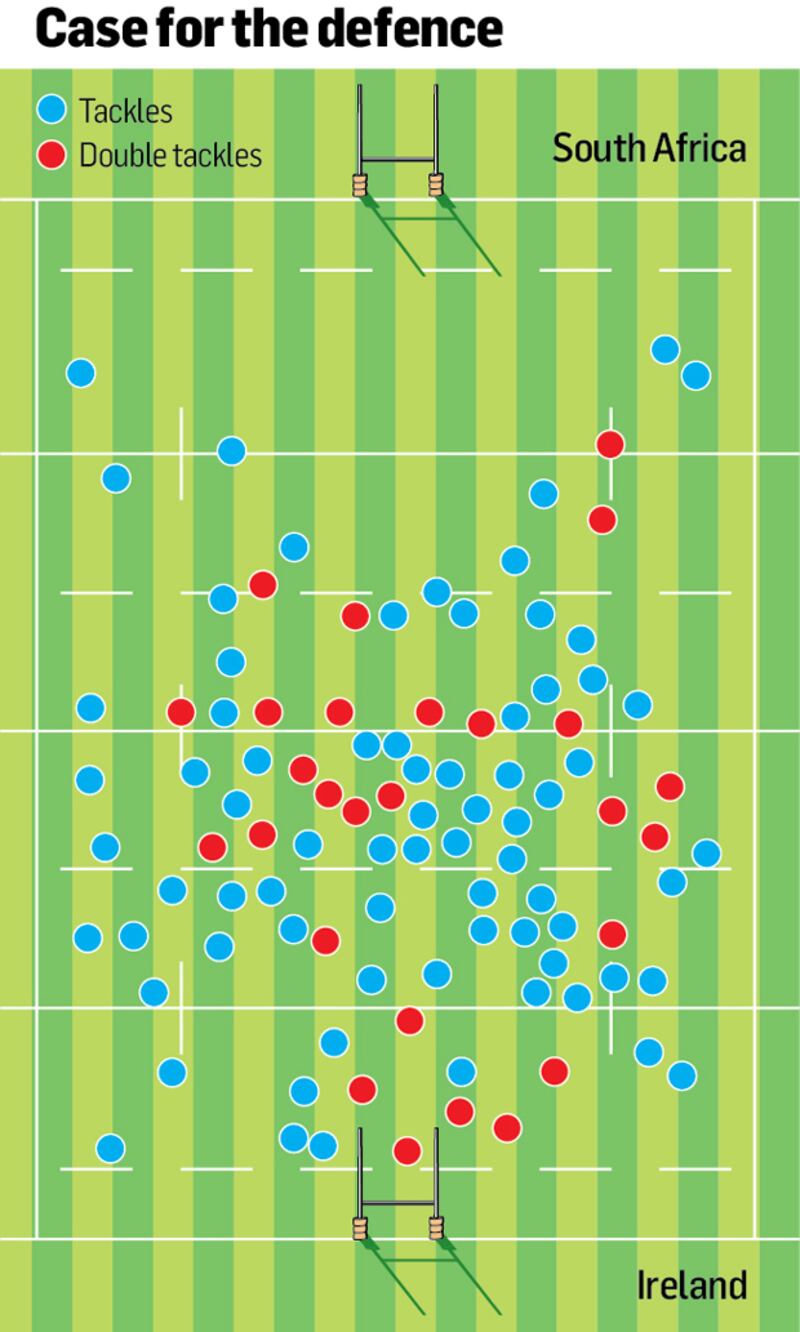"Attack is the secret of defence; defence is the planning of an attack." Chinese general Sun Tzu, credited by historians as the author of the book The Art of War, may have been onto something some 2,500 years ago as that principle appears to have found a place in modern rugby union, certainly in tracing a line to comments made by Ireland captain Rory Best in the wake of last weekend's 38-3 win over the Springboks.
In the post-match debriefing, Best offered an insight into what Ireland defence coach Andy Farrell agreed with the players ahead of the test match at the Aviva stadium last weekend. "Faz [Farrell] has pushed for us to be attacking when the opposition has the ball. We know how dangerous they are when you give them time and space. By and large we were smart in there in defence."
Ireland certainly were that – smart plus a great deal more: effective, sharp and intelligent in identifying an opportunity to poach possession or sniffing out an isolated ball carrier and forcing the Springboks to concede penalties.
The aggressive line speed – they did vary that from time to time – was largely effective in forcing errors; South African decision-making was flawed for the most part, kicking when they should have run or moved the ball and running when there was space in behind.
Potency
The fact that Ireland permitted one clean break, three offloads and missed, according to the official statistics, 18 tackles over the 80 minutes, allowing South Africa just three points on the scoreboard, underlines the potency of the Irish defence.
The Springboks dominated the territory (56 per cent-44 per cent) and possession (54 per cent-46 per cent) statistics and, as a physically big side in all bar the back three positions, it requires good technique, communication and concentration to negate the threat, while acknowledging that South Africa’s attack was dulled by inadequacy in the basic tenets of kicking and handling.

The dots in the graphic below are a representation – there wasn’t room to include all 110 tackles (31 with multiple tacklers) – of the nuances Ireland demonstrated in defence, the red dots indicating where Ireland committed multiple players to the tackle, usually two but occasionally three. On rare occasions it was born out of necessity when a Springbok won the initial collision, but in the main it centred on two Irish players, one going low and the other targeting the upper body/ball.
The double/triple tackle was employed roughly 28 per cent of times in terms of the overall figure and, interestingly, almost a quarter of those took place in Ireland's 22, including five in a sequence of eight consecutive tackles that eventually led to an Irish penalty: Conor Murray made the initial tackle and CJ Stander latched onto the ball in a nanosecond.
Penalised
Stander was penalised for a high tackle and Jonathan Sexton for a late one, with the former allowing South Africa their only access to the scoreboard. On the other side of the ball, Ireland were pinged three times for not releasing after the tackle but that was more than offset by penalties won at the breakdown by Rory Best, CJ Stander, Peter O'Mahony, Rhys Ruddock, John Ryan and Jacob Stockdale.
Stander, Bundee Aki, Seán O’Brien, Tadgh Furlong and Devin Toner all managed a double-digit tackle count, but what was arguably more impressive was the number of times that an Irish player managed to insinuate their way into the tackle situation to slow down Springbok ball and force the opposition to commit additional numbers to the clear-out.
What was also apparent was the excellent work that Robbie Henshaw performed in defence, comfortable in the 13 jersey and the duties that accompany it. His ability to defend that outside channel was important on the day when his midfield partner was making his debut and the two wings, Andrew Conway and Jacob Stockdale, had less than 10 caps between them.
Bunkee Aki set the tone defensively with a dominant opening tackle, first stopping on impact and then driving the unfortunate Springbok tighthead prop Coenie Oosthuizen backwards. Best remarked: “It was a great hit; it got us off to a great start.” Ireland never let up from there, making 19 tackles in the first quarter, 29 in the second, 31 in the third and 31 in those final 20 minutes.
Fiji should pose a greater threat in an attacking capacity on Saturday. The benchmark defensively for the November Test series has been set.












